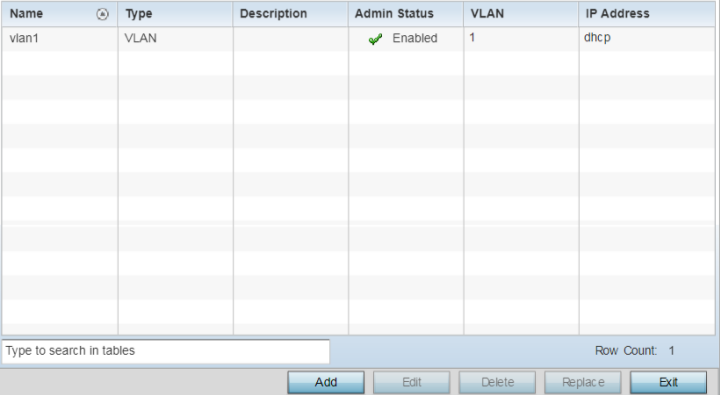A virtual interface is required for layer 3 (IP) access to a controller or service platform or provide to layer 3 service on a VLAN. The virtual interface defines which IP address is associated with each VLAN ID the controller or service platform is connected to. A virtual interface is created for the default VLAN (VLAN 1) to enable remote administration. A virtual interface is also used to map VLANs to IP address ranges. This mapping determines the destination for routing.
To review existing virtual interface configurations and create a new virtual interface configuration, modify (override) an existing configuration or delete an existing configuration:

| Name | The name of each listed virtual interface assigned when it was created. The name is between 1 - 4094, and cannot be modified as part of a virtual interface edit. |
| Type | The type of virtual interface for each listed interface. |
| Description | The description defined for the virtual interface, either when it was created or when it was edited. |
| Admin Status | A green check mark means the listed virtual interface configuration is active and enabled with its supported profile. A red “X” means the virtual interface is currently shut down. The interface status can be modified when a new virtual interface is created or an existing one modified. |
| VLAN | The numerical VLAN ID associated with each listed interface. |
| IP Address | Whether DHCP was used to obtain the primary IP address used by the virtual interface configuration. |
After reviewing the configurations of existing virtual interfaces, determine whether a new interface needs to be created, an existing virtual interface needs to be edited (overridden), or an existing virtual interface needs to be deleted.